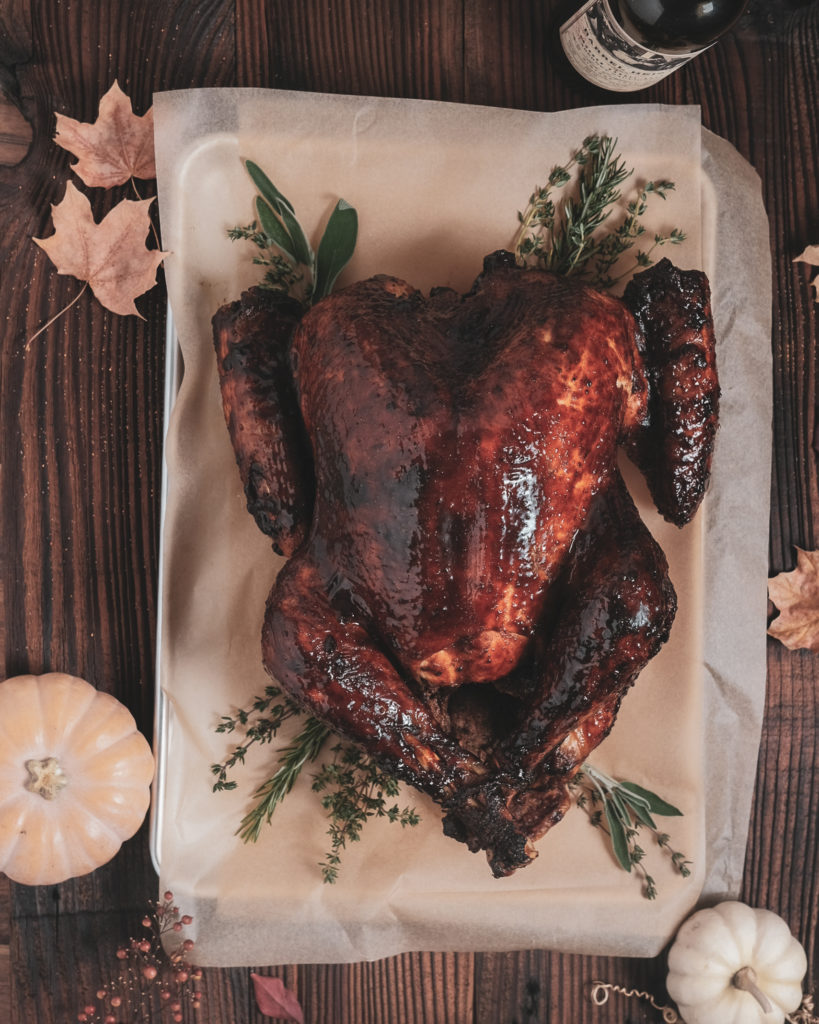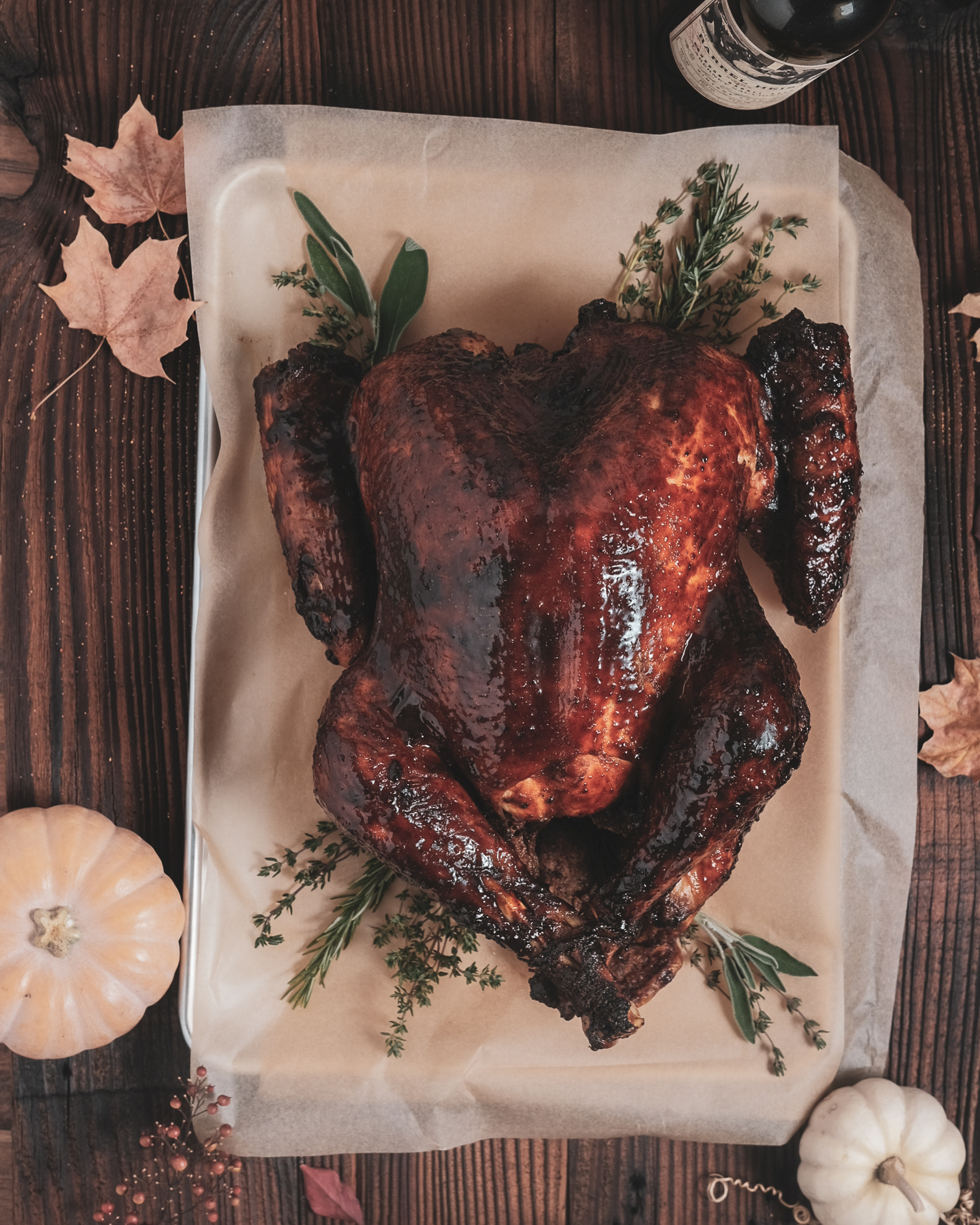November 16, 2021

Every fourth Thursday of November, turkeys take center stage at tables across the US.
Cooking a whole turkey is generally a once a year event, so it can be a daunting and unfamiliar task. Even seasoned home cooks may not have the intuitive instincts as with other frequently made dishes. There’s a lot riding on nailing the turkey because nobody wants to eat a dry, bland bird.
An unappealing turkey won’t necessarily ruin Thanksgiving because after all, it’s as much about togetherness as it its about the food. But a juicy, flavorful turkey will be the talk of the table. After all, most people don’t expect a turkey to be the best thing on the table, but with the right cooking and seasoning methods, it definitely can be.
In my quest to make the best Thanksgiving turkey, I did a bit of research and compared some of the most popular recipes on the web. Surprisingly, the advice for the “best” turkey is about as varied as a buffet.
Oven Temperature
The variety of cooking temperatures alone is mind boggling:
Start high, finish low
Alton Brown: Start at 500 F, finish at
Bon Appetit: Start at 450 F, finish at 300 F
Start low, finish high
Whole Foods: Start at 350 F, finish at 475 F
Consistent temperature
Butterball: 325 F
Good Housekeeping: 375 F
Turkey Internal Temperature
It doesn’t seem like there should be a debate about the turkey’s internal temperature. Yet there are several recipes that suggest taking the turkey out at 150 or 155 F, well below the the FDA recommended safe temperature of 165 F.
The justification for under cooking the bird is that the internal temperature will continue to rise once it is taken out of the oven.
In my experience, the internal temperature did not continue to rise more than a few degrees.
So play it safe and use a meat thermometer to make sure your turkey reaches an internal temperature of the recommended 165 F. You want your guests to remember how good the turkey tasted, not how bad it made them feel.
Cooking & Seasoning Methods
Brining & basting
Then there’s the questions of to brine or not to brine, to baste or not to baste, for which you’ll find an equally inconsistent advice.
Top Turkey tips, no matter which method you use
From my research on the web and personal experiments in the kitchen, here are some of the top considerations for cooking your Thanksgiving turkey.
In short, there is no one perfect way to cook a delicious turkey. There’s no conclusive evidence on oven temperature and whether to brine or not to brine, to baste or not to baste. It comes down to personal taste and a little experimentation.
No matter which cooking method or temperature you end up using, these are the tips that I’ve found that really do make a difference.
Plan ahead
Thawing
Thawing a frozen turkey can take anywhere between 2 to 6 days, depending on the size of your turkey.
Butterball has an excellent thawing and cooking time calculator based on the weight of your turkey.
Brining
- Wet brine: Plan for around 12 hours and up to 24 for a larger turkey, according to Real Simple
- Dry brine: Plan on 24 to 74 hours, according to Simply Recipes
Drying out the skin
Dry skin = crispy skin. If you’ve wet brined your turkey, plan to dry out the skin at least overnight or up to three days, according to Whole Foods
Seasoning
I have found layers of flavor give the best depth of flavor that season the bird from the inside out.
- Brine
- Rub
- Smoke (optional, but if you do have a smoker, go for it!)
- Glaze
I was really happy with how tender and flavorful my turkey turned out with the Meat Church brine kit and Holy Voodoo rubhttps://www.meatchurch.com/products/turkey-combo-holyvoodoo?_pos=1&_sid=b3b9a4db8&_ss=r, along with this maple glaze (I subbed rum for whisky).
*If the turkey skin seems to be browning unevenly, just cover that part with foil
Serving
- Resting: For an extra juicy turkey, let it rest 20-30 minutes.
- Carving: For a great presentation at the table, here’s a video tutorial from Bon Appetit.
What I’ll try differently next time:
I did use butter on the skin of my turkey, but according to J. Kenji-López-Alt, buttering the skin and basting it can make the turkey skin brown unevenly. Even though the glaze mostly evened out the color, next time I’ll try omitting those steps.
In Conclusion
If it’s your first time making a turkey for a crowd, my best tip is to practice on a whole chicken first. Then you can get a feel for how you’d like to season your turkey and the best temperature for your oven (because ovens can really vary!)
As long as you follow the guidelines for safely cooking a turkey, the rest is up to you! Part of the fun is experimenting in the kitchen. Have fun taking inspiration from a variety of recipes to make your very own perfect recipe.
And now I’d love to hear from you, what’s your favorite method for cooking and seasoning a turkey?

Comments